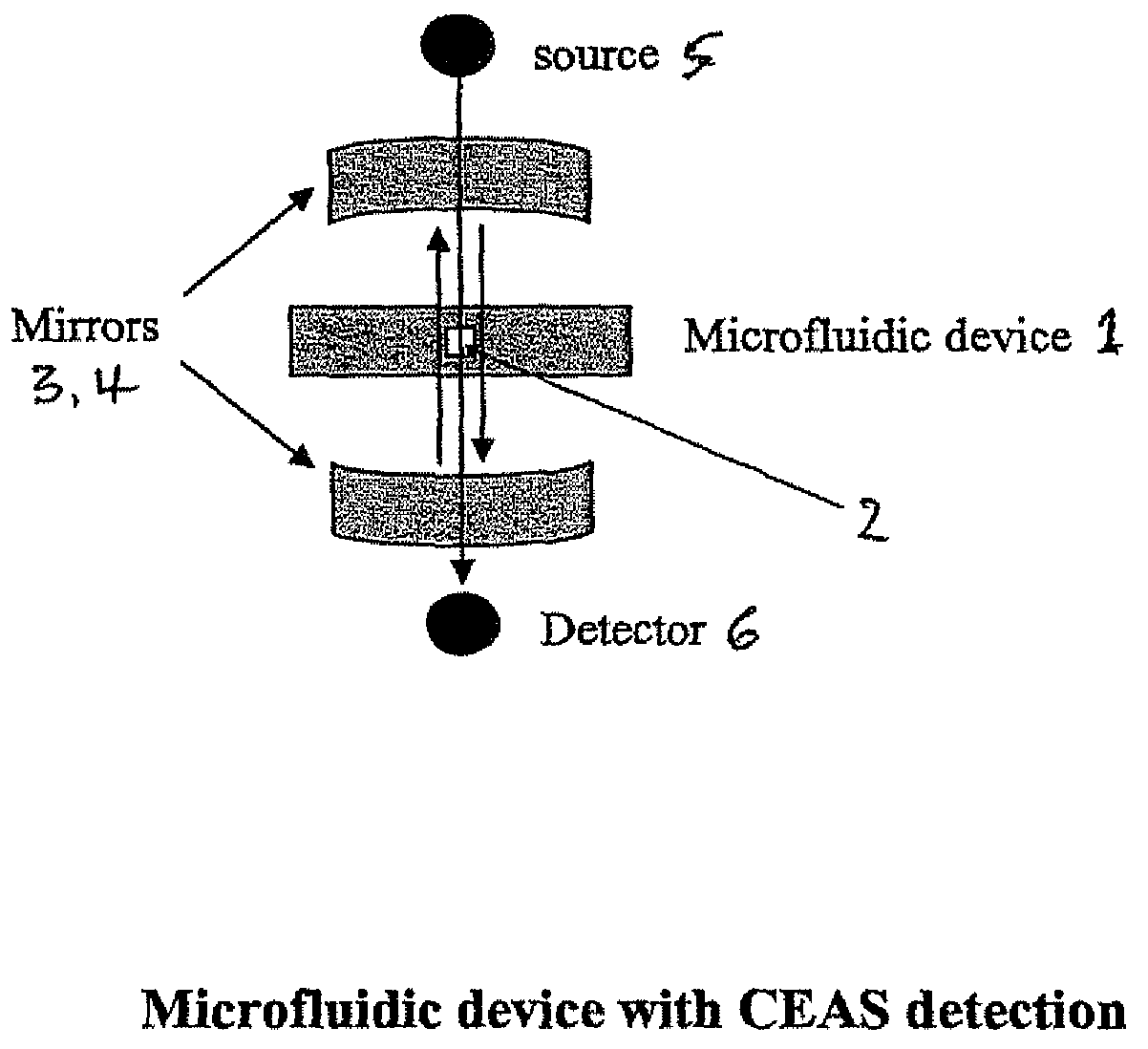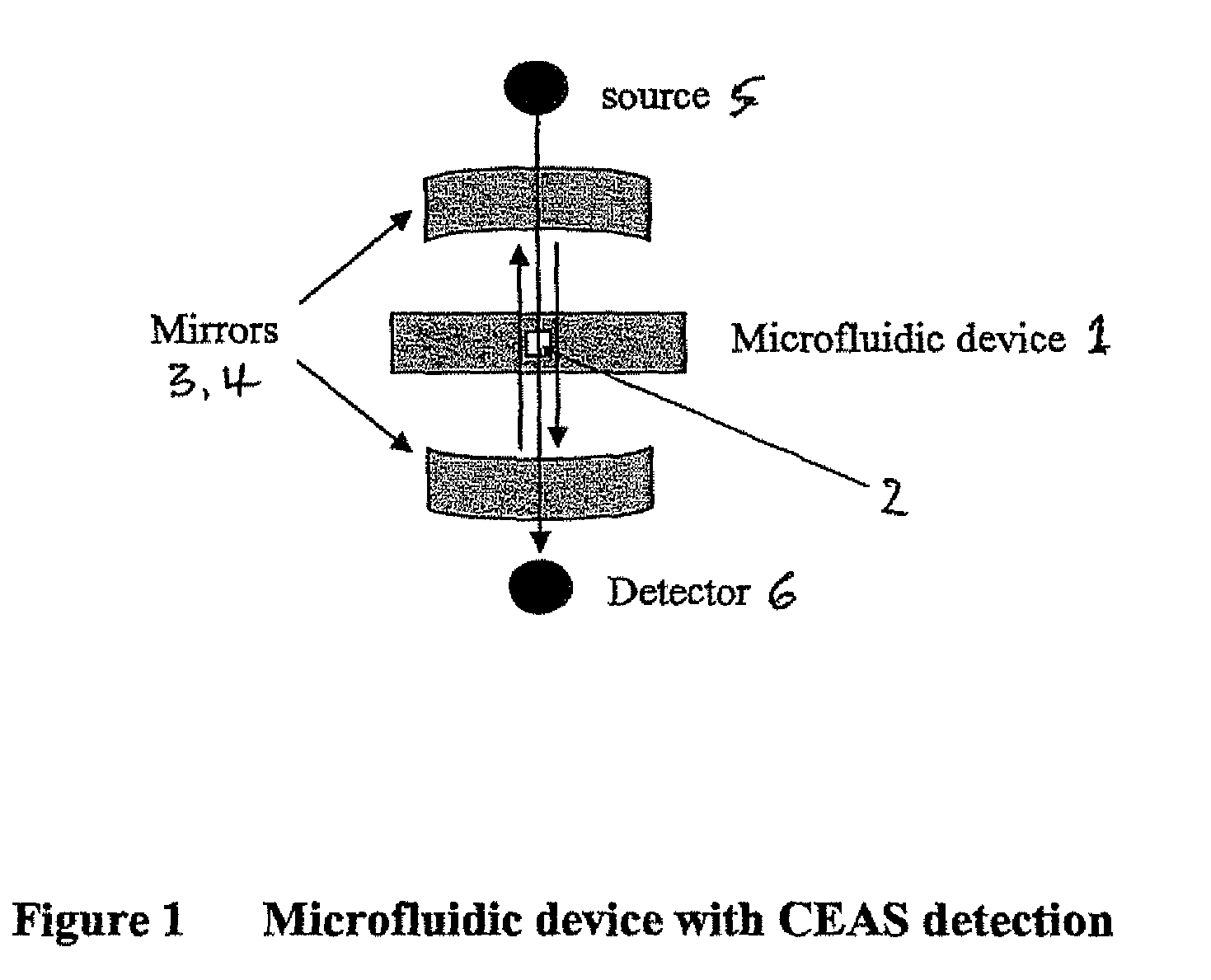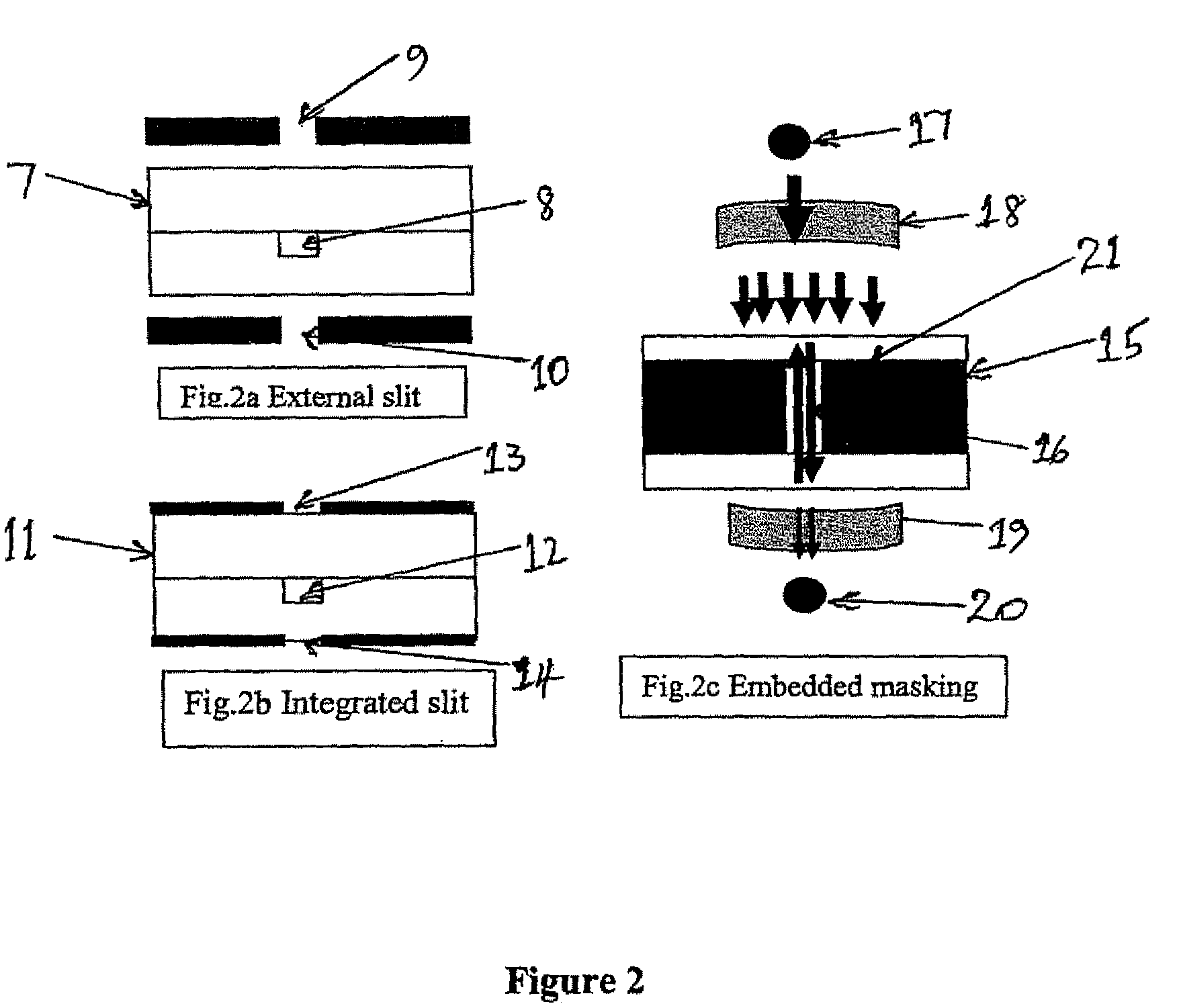Detection method
a technology of absorption spectroscopy and apparatus, which is applied in the field of apparatus and methods for absorption spectroscopy of cavity, can solve the problems of increasing complexity of dispensing and detection operations, increasing the cost of detection, and increasing the length of the gas phase base path, so as to facilitate efficient, yet inexpensive, detection, and low detection volume
- Summary
- Abstract
- Description
- Claims
- Application Information
AI Technical Summary
Benefits of technology
Problems solved by technology
Method used
Image
Examples
Embodiment Construction
[0041]The invention provides a method and apparatus which allow for the detection of the spectral absorption properties of a fluid in a microenvironment by means of Cavity Enhanced Absorption Spectroscopy. The microenvironment may comprise a microfluidic device comprising at least one microchannel formed in a substrate through which the fluid may flow, allowing for measurements to be taken on a continuous basis; such microfluidic devices are generally referred to as a Lab-on-a-chip. Typically, the overall section of said microchannels may be anything from about 1 μm2 to about 1 mm2, thereby providing mirror separations in the micrometre and sub millimetre ranges. In certain preferred embodiments of the invention, mirror separations are generally in the range from about 10 μm to about 100 μm.
[0042]The mirror separations employed in the method and apparatus of the present invention allow for accurate measurements to be obtained by the use of sample volumes which are significantly lowe...
PUM
| Property | Measurement | Unit |
|---|---|---|
| volume | aaaaa | aaaaa |
| volume | aaaaa | aaaaa |
| diameter | aaaaa | aaaaa |
Abstract
Description
Claims
Application Information
 Login to View More
Login to View More - R&D
- Intellectual Property
- Life Sciences
- Materials
- Tech Scout
- Unparalleled Data Quality
- Higher Quality Content
- 60% Fewer Hallucinations
Browse by: Latest US Patents, China's latest patents, Technical Efficacy Thesaurus, Application Domain, Technology Topic, Popular Technical Reports.
© 2025 PatSnap. All rights reserved.Legal|Privacy policy|Modern Slavery Act Transparency Statement|Sitemap|About US| Contact US: help@patsnap.com



